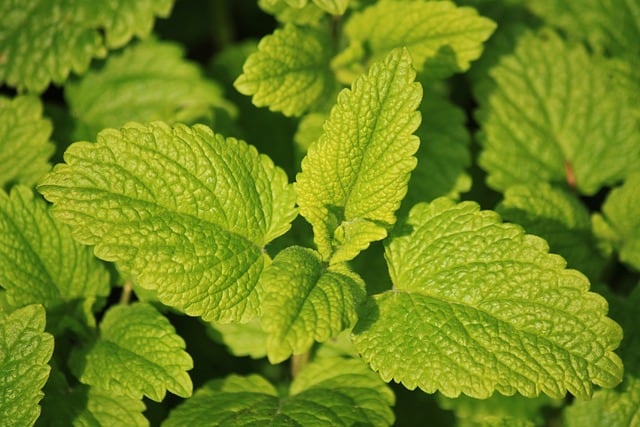Lemon balm is a popular herb with a lemony scent that is widely used for medicinal and culinary purposes. However, if you notice the lemon balm leaves turning brown, it can be a cause for concern.
Brown leaves can indicate a problem with the plant’s health, and it’s important to identify the cause of the issue to prevent further damage.
There are several reasons why lemon balm leaves can turn brown. Some of the most common causes include improper watering, pests and diseases, and environmental factors such as temperature and sunlight.
Understanding the underlying cause of the problem is crucial to determine the appropriate solution. In this article, we will explore the different factors that can lead to brown leaves on your lemon balm plant and provide tips on how to address them.
Key Takeaways
- Brown leaves on a lemon balm plant can indicate a problem with the plant’s health.
- The most common causes of brown leaves include improper watering, pests and diseases, and environmental factors such as temperature and sunlight.
- Identifying the underlying cause of the problem is crucial to determine the appropriate solution.
More on this category:
Understanding Lemon Balm
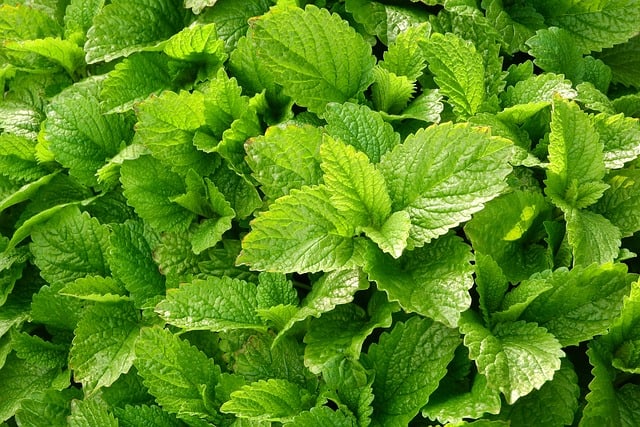
Lemon Balm, also known as Melissa officinalis, is a perennial herb that is commonly grown for its lemon-scented leaves. It belongs to the mint family and is native to the Mediterranean region. Lemon balm is a popular herb that has been used for centuries for its medicinal properties and culinary uses.
The lemon balm plant grows up to 2 feet tall and has light green, heart-shaped leaves that are slightly serrated. The leaves have a lemony scent and are used in teas, salads, and other dishes to add flavor. Lemon balm is a hardy plant that is easy to grow and can be grown in a variety of soils and climates.
Lemon balm is a popular herb that is used for its calming and soothing effects. It is believed to have a positive effect on the nervous system and can help to reduce anxiety and stress. Lemon balm is also used to treat digestive problems, such as bloating, gas, and stomach cramps.
The lemon balm plant is a low-maintenance plant that requires minimal care. It prefers well-drained soil and partial shade, but it can also tolerate full sunlight. Lemon balm is a hardy plant that can survive in temperatures as low as -20°F.
Lemon Balm Leaves Turning Brown – 5 Common Problems
Lemon balm is a hardy perennial herb that is easy to grow and maintain. However, sometimes the leaves of the plant may turn brown, indicating that there is a problem. There are several reasons why lemon balm leaves may turn brown, including:
1. Lack of Water
Water is essential for the growth and health of any plant, including lemon balm. If the plant is not receiving enough water, it may begin to show signs of stress, such as browning leaves.
Overwatering can also lead to brown leaves, as the roots may become waterlogged and begin to rot. It is important to strike a balance between under-watering and overwatering to keep the plant healthy.
2. Soil and pH
Lemon balm prefers well-draining soil that is slightly acidic, with a pH between 6.0 and 7.5. If the soil is too alkaline, the plant may not be able to absorb nutrients properly, leading to brown leaves. It is important to test the soil pH regularly and adjust it as necessary.
3. Light and Temperature
Lemon balm prefers partial shade to full sun, but if it is exposed to too much direct sunlight, the leaves may become scorched and turn brown. On the other hand, if the plant is kept in a dark area, it may not receive enough light to grow properly, leading to brown leaves.
Temperature extremes, such as extreme heat or cold, can also cause browning.
4. Disease and Pests
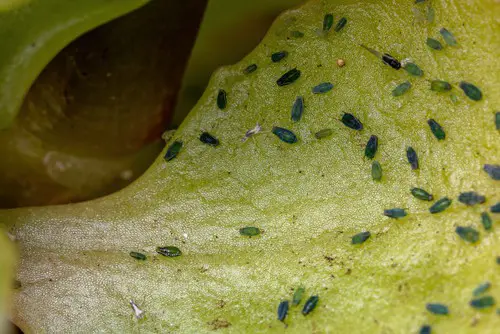
Brown spots on lemon balm leaves may be a sign of disease or pest infestation. Common pests that affect lemon balm include aphids, caterpillars, and mites. These pests can cause defoliation of the plant, leading to weak, brown leaves that die off rapidly. Disease problems, such as root rot, can also cause brown leaves.
5. Lack of Nutrients
Lemon balm requires regular feeding with a balanced fertilizer to maintain healthy growth. If the plant is not receiving enough nutrients, the leaves may turn brown and die. It is important to provide the plant with the necessary nutrients, such as nitrogen, phosphorus, and potassium, to keep it healthy.
Role of Watering
Watering plays a crucial role in the health of lemon balm plants. Proper watering techniques can help prevent the leaves from turning brown and dying. On the other hand, overwatering or underwatering can result in the same problem.
Lemon balm plants require regular watering to thrive. The soil should be kept moist, but not waterlogged. If the soil dries out completely, the leaves may turn brown and die. On the other hand, if the soil is too wet, the roots may become waterlogged and rot, resulting in the same problem.
To prevent the leaves from turning brown, it is important to water the soil once the top 1/2 to 1 inch has dried out. Soggy roots will make lemon balm worthless. It is also important to ensure that the pH of the soil is between 6.7 and 7.3.
If the plant is in a pot, ensure that the pot has drainage holes to allow excess water to drain out. If the plant is in the ground, ensure that the soil is well-draining to prevent water from pooling around the roots.
It is also important to note that the watering needs of lemon balm may vary depending on the climate and season. During hot and dry weather, the plant may require more frequent watering. During cooler and wetter weather, the plant may require less frequent watering.
Importance of Sunlight and Temperature

Lemon balm is a hardy plant that can grow in a wide range of conditions, but it thrives in full sun or partial shade. Adequate sunlight is essential for the growth and health of lemon balm plants, as it helps the plant produce the essential oils that give it its distinctive lemony scent and flavor.
However, too much sun can be harmful to lemon balm plants, especially in hot temperatures. If the plant is exposed to too much direct sunlight, the leaves can become scorched and turn brown.
It is important to ensure that lemon balm plants are not exposed to prolonged periods of hot, direct sunlight, especially during the hottest part of the day.
On the other hand, lemon balm plants can also suffer if they are not exposed to enough sunlight. If the plant is grown in the shade or partial shade, it may not produce as much essential oil, and the leaves may turn yellow and fall off.
Temperature is another important factor to consider when growing lemon balm. This herb prefers moderate temperatures, between 60°F to 75°F. If the temperature is too hot or too cold, the plant may become stressed and the leaves may turn brown.
Significance of Soil and Drainage
Lemon balm is a hardy plant that can grow in a variety of soil types, but it prefers well-draining soil. Poor drainage can lead to waterlogged soil, which can cause the roots to rot and lead to browning of the leaves. It is essential to ensure that the soil drains well to prevent waterlogging.
The pH of the soil is also crucial for the healthy growth of lemon balm. It prefers a slightly acidic soil with a pH range of 6.0 to 7.5. If the soil is too acidic or too alkaline, it can affect the plant’s ability to absorb nutrients from the soil, leading to brown leaves.
It is recommended to test the soil before planting and adjust the pH level accordingly.
Moist soil is critical for the growth of lemon balm. The soil should be kept moist but not waterlogged. Overwatering can lead to root rot and cause the leaves to turn brown. It is recommended to water the plant deeply once a week, allowing the soil to dry out slightly between waterings.
Dealing with Pests and Diseases
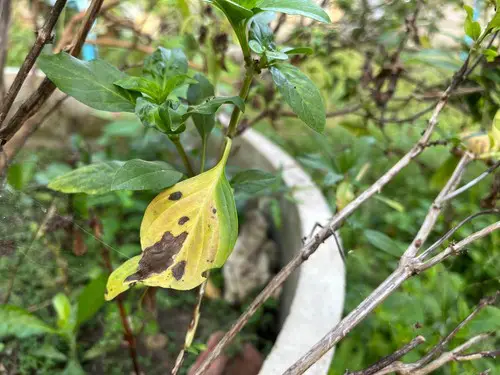
Lemon balm plants are susceptible to various pests and diseases that can cause the leaves to turn brown and die young. Here are some common pests and diseases that can affect lemon balm plants and how to deal with them.
Pests
Ants
Ants are attracted to the sweet sap produced by lemon balm plants and can often be found crawling on the leaves. While ants do not directly harm the plant, they can attract other pests such as aphids. To get rid of ants, sprinkle diatomaceous earth around the base of the plant or use ant baits.
Aphids
Aphids are small, soft-bodied insects that feed on the sap of the leaves, causing them to turn brown and die. To get rid of aphids, spray the plant with a solution of water and dish soap or use insecticidal soap.
Diseases
Root Rot
Root rot is a fungal disease that can occur when the soil is too wet and does not drain properly. The roots of the plant become waterlogged and start to rot, causing the leaves to turn brown and die. To prevent root rot, make sure the soil is well-draining and avoid overwatering the plant.
Powdery Mildew
Powdery mildew is a fungal disease that appears as a white or gray powdery coating on the leaves. It can cause the leaves to turn brown and die if left untreated. To prevent powdery mildew, make sure the plant is not overcrowded and has good air circulation.
If powdery mildew does appear, spray the plant with a solution of water and baking soda or use a fungicide.
Nutrient Requirements and Fertilizing
Lemon balm plants require specific nutrients to grow and thrive. If the plant is not getting enough nutrients, the leaves may turn brown or yellow. Fertilizing can help provide the necessary nutrients to the plant.
When fertilizing lemon balm, it is important to avoid over-fertilizing. Over-fertilizing can cause damage to the plant and result in brown leaves. Organic fertilizers are a good option for lemon balm as they provide a slow release of nutrients.
Nitrogen is an essential nutrient for lemon balm. It helps the plant grow and produce new leaves. Phosphorus is also important for the plant’s growth and development. It helps with root development and flower production. Potassium is necessary for overall plant health and helps with disease resistance.
Lemon balm may also require other nutrients such as zinc and magnesium. If the plant is lacking these nutrients, the leaves may turn brown. It is important to provide a balanced fertilizer that includes all the necessary nutrients.
When fertilizing, it is important to follow the instructions on the fertilizer package. Applying too much fertilizer can harm the plant and cause brown leaves. It is also important to fertilize at the right time. Fertilizing in the spring and summer is usually sufficient for lemon balm.
Planting and Transplanting Techniques

Lemon balm can be grown from seeds or transplanted from a pot or container. If starting from seed, sow the seeds indoors for about two months before transplanting the lemon balm into the garden after the last spring frost.
Seeds require light to germinate, so do not cover them or cover them only lightly with fine soil. Germination will come in about 14 days.
When transplanting, make sure to choose a pot or container that is at least 8 inches deep and has drainage holes. Lemon balm prefers moist soil but will not tolerate soggy roots.
Make sure the soil is well-draining and sandy loam. Lemon balm grows in almost any soil, so long as it’s not super wet. The pH level should be between 6.7 to 7.3.
If overcrowding occurs, transplant the lemon balm to a larger pot or container with fresh soil. When transplanting, make sure to water the plant well before and after transplanting to help reduce shock.
If growing lemon balm indoors, make sure to place the pot or container in an area that receives at least six hours of sunlight per day. If natural light is not available, use artificial light to supplement.
When transplanting outdoors, make sure to harden off the seedlings by gradually exposing them to outdoor conditions over a period of one to two weeks. Start by placing them outside for a few hours a day and gradually increase the amount of time they spend outdoors.
Pruning and Harvesting
Lemon balm is a perennial herb that can grow up to 2 feet tall and 2 feet wide. It is important to prune and harvest the plant regularly to encourage healthy growth and prevent it from becoming too bushy. Pruning and harvesting can also help to prevent the plant from going into a dormant state.
Pruning
Pruning is the process of removing dead or damaged leaves, stems, and flowers from the plant. It is important to prune lemon balm regularly to prevent the plant from becoming too bushy and to encourage healthy growth. Pruning can also help to prevent the plant from going into a dormant state.
To prune lemon balm, use a sharp pair of garden shears or scissors to cut back the stems and leaves. Cut back the stems to just above a leaf node, which is where a leaf attaches to the stem. This will encourage new growth and prevent the plant from becoming too woody.
Harvesting
Harvesting is the process of picking the leaves and flowers from the plant for use in cooking, teas, and other remedies. It is important to harvest lemon balm regularly to prevent the plant from becoming too woody and to encourage healthy growth.
To harvest lemon balm, wait until the plant has reached maturity and the leaves and flowers are fully developed. Cut the stems just above a leaf node, leaving enough stem to encourage new growth. It is best to harvest lemon balm in the morning when the oils in the leaves and flowers are most concentrated.
Harvested lemon balm can be used fresh or dried. To dry lemon balm, hang the stems upside down in a cool, dry place until the leaves and flowers are completely dry. Strip the leaves and flowers from the stems and store them in an airtight container in a cool, dry place.
Lemon Balm in the Kitchen
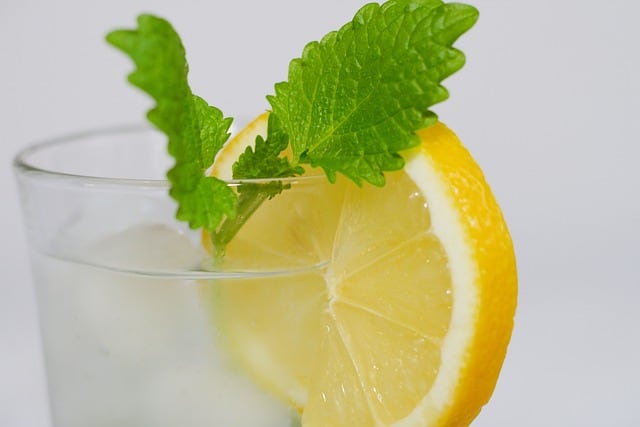
Lemon balm is a versatile herb that can be used in various dishes and drinks. Its lemony flavor adds a refreshing taste to any recipe. Here are some ways to use lemon balm in the kitchen:
1. Flavor
Lemon balm has a lemony flavor that is perfect for adding zest to any dish. It pairs well with fish, chicken, and pork. You can use it to flavor sauces, marinades, and dressings. Lemon balm can also be sprinkled on top of salads for an extra burst of flavor.
2. Food
Lemon balm can be used in a variety of dishes. It can be added to soups, stews, and casseroles to enhance their flavor. Lemon balm can also be used in pasta dishes and risottos. It is a great addition to any recipe that calls for lemon juice or zest.
3. Cooking
When cooking with lemon balm, it is best to use fresh leaves. The leaves can be chopped or torn into small pieces and added to the dish. Lemon balm can also be used as a garnish for drinks and desserts.
4. Teas
Lemon balm tea is a popular drink that is known for its calming properties. To make lemon balm tea, steep fresh or dried leaves in hot water for 5-10 minutes. Lemon balm tea can be enjoyed hot or cold and can be sweetened with honey or sugar.
5. Essential Oils
Lemon balm essential oil is used in aromatherapy to promote relaxation and reduce stress. It can be diffused or added to a carrier oil and used topically. It is important to dilute the essential oil before using it on the skin.
Other Interesting Facts About Lemon Balm
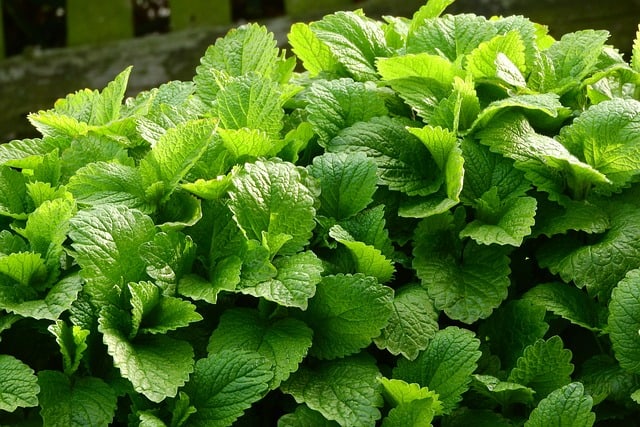
Lemon balm is a versatile herb that has been used for centuries for its medicinal and culinary properties. In addition to being a great addition to your garden, it has many other interesting facts that make it worth knowing about.
One interesting fact about lemon balm is that it is a great herb for gardeners. It is easy to care for and can be grown in a variety of soil types. It prefers moist, well-drained soil and can benefit from a layer of mulch to help retain moisture.
In terms of care, it is important to prune the plant regularly to encourage new growth and prevent it from becoming too woody.
Lemon balm is also a hardy plant that can withstand frost and cold temperatures. It is typically hardy in zones 4-9 and can even be grown year-round in warmer climates. When fully grown, it can reach a height of 2-3 feet and has dark green leaves that are heart-shaped.
Another interesting fact about lemon balm is that it is a honey plant, meaning it is a great source of nectar for bees. It is also a self-seeding plant, which means it can spread quickly and easily in your garden.
This can be a good thing if you want to grow more lemon balm, but it is important to keep an eye on it to prevent it from taking over.
Lemon balm has many other uses beyond its culinary and gardening applications. It is known for its ability to help with congestion and has been used as a natural remedy for colds and flu. It can also be used to sanitize surfaces and has been shown to have antiviral properties.
Frequently Asked Questions
What causes brown spots on lemon balm leaves?
Brown spots on lemon balm leaves can be caused by several factors, including fungal infections, insect infestations, nutrient deficiencies, and improper watering.
One common cause is a lack of moisture, which can lead to the plant becoming stressed and developing brown spots on its leaves. Another common cause is exposure to direct sunlight, which can cause the leaves to dry out and turn brown.
How do I prevent lemon balm leaves from turning brown?
To prevent lemon balm leaves from turning brown, it is important to provide the plant with adequate moisture and nutrients. This can be achieved by watering the plant regularly and adding compost or fertilizer to the soil.
It is also important to ensure that the plant is not exposed to direct sunlight for extended periods of time, as this can cause the leaves to dry out and turn brown.
What are the signs of root rot in lemon balm?
The signs of root rot in lemon balm include yellowing leaves, wilting, and a foul odor coming from the soil. The plant may also begin to droop or die back, and the roots may appear brown or black and mushy.
Can overwatering cause lemon balm leaves to turn brown?
Yes, overwatering can cause lemon balm leaves to turn brown. When the plant is overwatered, the soil becomes saturated and the roots are unable to absorb oxygen, which can lead to root rot and other problems.
How often should I water my lemon balm plant?
Lemon balm plants should be watered regularly, but not excessively. The soil should be kept moist, but not waterlogged, and the plant should be allowed to dry out slightly between waterings.
In general, lemon balm plants should be watered once or twice a week, depending on the weather and the soil conditions.
What is the best way to treat lemon balm with septoria leaf spot?
Septoria leaf spot is a fungal disease that can affect lemon balm plants. To treat this disease, it is important to remove any infected leaves and dispose of them properly.
The plant should also be treated with a fungicide, which can be purchased at most garden centers. In addition, it is important to ensure that the plant is not overwatered, as this can contribute to the spread of the disease.

Hey, I’m Lisa and I’ve been an avid gardener for over 30 years. I love writing, talking and living in the garden! Feel free to connect with me on my socials below

